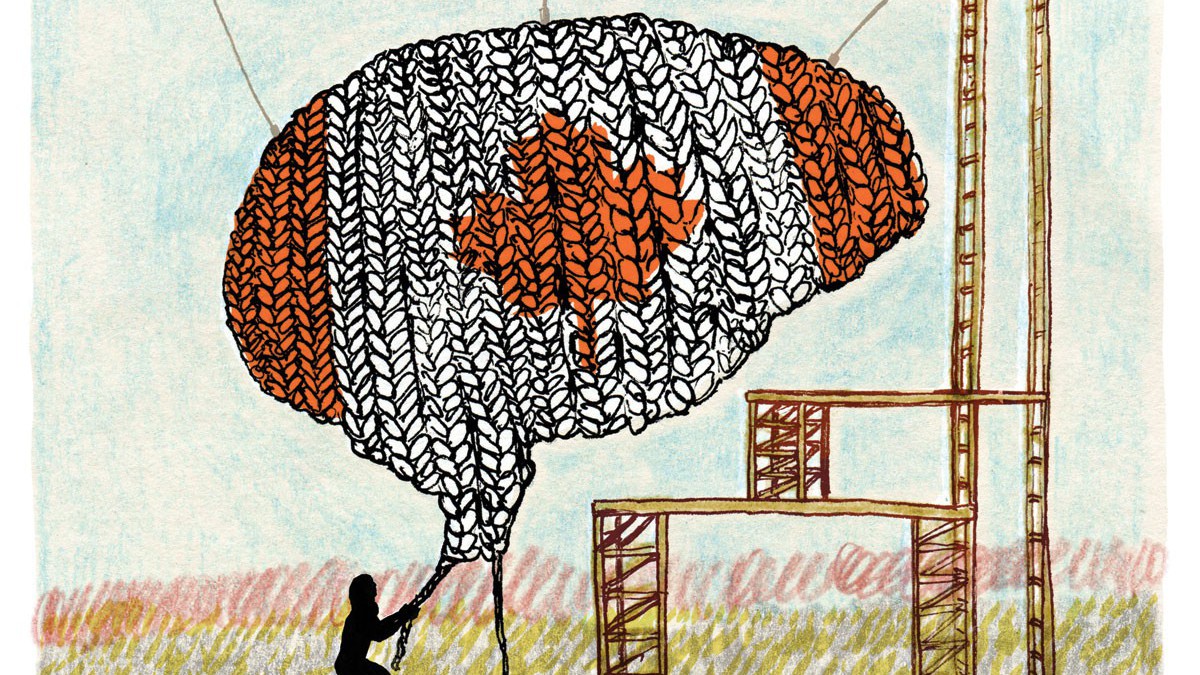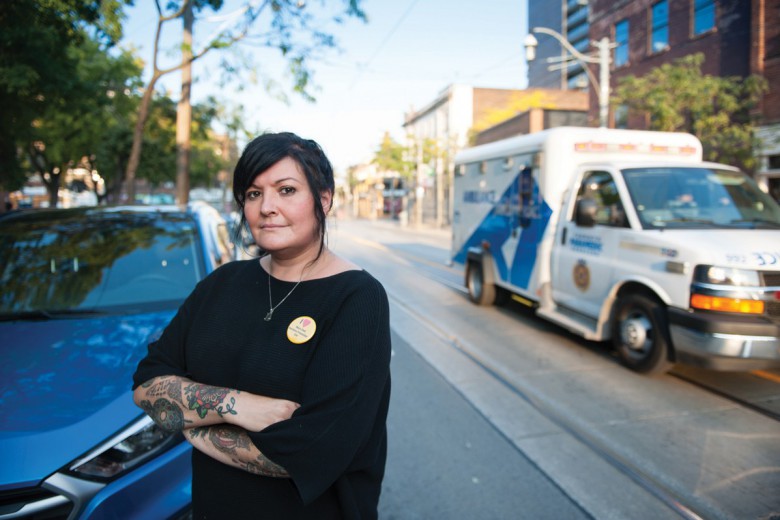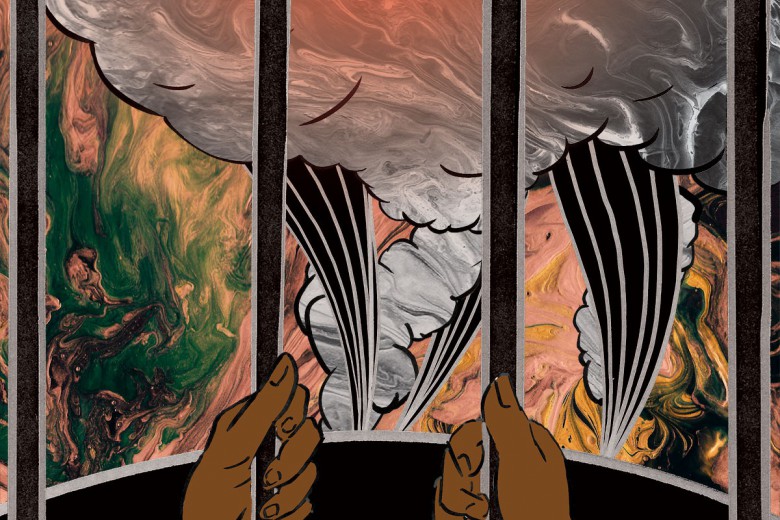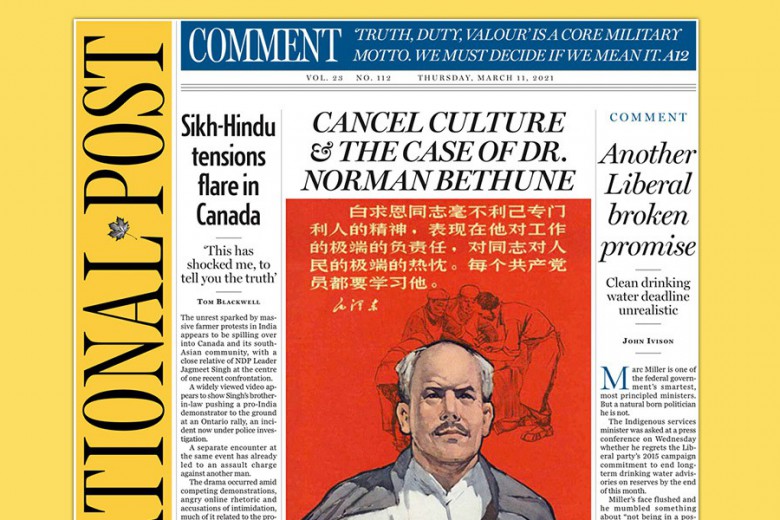For over 150 years, Canada has driven people mad. The economic, political, and social distress caused by continual colonial, capitalist expansion has been pathologized and stigmatized, repressed and institutionalized, drugged and incarcerated. But for the same 150 years, mad people* have been resisting the restraints Canada has placed on them, building communities of shared struggle to confront this maddening country. Here, we tell the stories of three of these people – Mary Pengilly, Dave Beamish, and Stéphane Grenier – whose beliefs that people are able to know for themselves the care they need has sparked a mad people’s movement in Canada. All three found ways to tend to the wounds inflicted by Canada on their own terms. It is through their narratives that we bear witness to Canada’s record as a source or aggravator of insanity for these activists and countless others.
Confederation Era
Mary Pengilly, née Huestis, was born in 1823 into a British loyalist family that had moved to Atlantic Canada from Connecticut in 1783. Pengilly worked as a schoolteacher and continued working after her marriage in 1847 to Robert Pengilly. They had at least seven children.
On June 20, 1877, the Great Fire of Saint John destroyed the Pengillys’ home and business, along with over 1,600 other structures. Soon after, Pengilly separated from her husband and moved to Massachusetts, intent on having her daughter Clara educated there; however, Clara died in 1882 at age 12. The following year, Pengilly grew very focused on writing and became convinced she had committed wrongs. Concerned about their mother, Lewis and Thomas Pengilly had her committed, against her will, to the Provincial Lunatic Asylum in Saint John, where she spent the next six months, keeping a diary of her difficult experiences, which included poor food and social isolation.
Pengilly despised her treatment, likening the asylum to a penitentiary, and arguing, “If I were the most miserable woman in the city of St. John, I would be entitled to better treatment at the hands of those who are paid by the Province.…” Pengilly also observed that doctors would have more success in treatment if they actually asked the patients about the causes of their illnesses – an argument for preventative, upstream care ahead of its time. Pengilly argued that she herself could provide better care to her fellow patients than they were receiving. Upon leaving the asylum in April 1884, she wrote, “At last I am free….I did not bid all the patients good-bye, for I hope soon to return and stay with them. I would like so much to look after these poor women, who are so neglected. I will ask the Commissioners to allow me to remain with them…”
Mary observed that the doctors would have more success if they asked the patients about the causes of their illness – an argument for preventative, upstream care ahead of its time.
The next year, Pengilly published her asylum diary. In her dedication, she said she hoped it would be read widely throughout Canada and the U.S., “to show the inner workings of their Hospitals and Asylums, and prompt them to search out better methods of conducting them, as well for the benefit of the superintendent as the patient.” Pengilly died in 1893.
Mid-Century Deinstitutionalization
Almost a century after Pengilly wished to support other residents at the asylum where she had stayed, Dave Beamish was coordinating a support program run by psychiatric survivors/consumers at Riverview Hospital in Coquitlam, B.C., where he had previously been hospitalized.
Born in Toronto in 1942, Beamish first experienced manic depression (now commonly referred to as bipolar disorder) in his late teens. In 1972, shortly after being discharged from hospital, Beamish learned about the Mental Patients Association (MPA). At this point in history, people across the country were being deinstitutionalized – a process that started in the 1950s of reintegrating into communities people who had no reason to be locked away. However, governments saw this move as an opportunity to cut funding, and community integration was extremely under-resourced, contributing to homelessness and addiction rates, among other challenges. Emerging in 1970, the MPA was one of the few organizations in Canada that responded to deinstitutionalization through peer-led initiatives. The organization quickly grew to include a 24-hour drop-in centre and housing program, and employed many people, whose jobs were granted through election by the members.
As he spent more time at the MPA and built friendships, Beamish’s mental health stabilized. In a 1975 article for the MPA publication In a Nutshell, Beamish describes a friend from the MPA climbing through his bedroom window to offer support when Beamish had been unable to leave his room for some time. At another point, Beamish had a manic episode which scared some members of the organization, who had him committed to the hospital. This was a source of conflict within the organization, and some members continued to feel badly about it later. Beamish, who acknowledged the importance of medication and other medical interventions at points in his recovery, says being committed was “the best thing that could [have] happen[ed].” This was one of the incidents that led to the creation of a set of principles for the organization that emphasized compassion, respect, and human rights, for the collective as well as the individual.
In 1973, the MPA held a protest outside Riverview Hospital, where a conference on “dangerous patients” was taking place. MPA members felt that portraying patients as a danger was akin to a witch hunt. They saw forced institutionalization as imprisonment without trial, and treatment through medication or electroshock therapy without consent as violent oppression.
A few years later, Beamish was working inside Riverview Hospital. The critical edge to his work never went away, though. David Reville, a politician and fellow consumer-survivor who served on the Canadian Mental Health Association board, says of Beamish, “There was a tinge of bitterness there about the mental health system for sure, and I remember asking him why he quit the board and his answer was that he lived in a small apartment and he had room for either his budgie’s cage or the CMHA agenda, and he picked the budgie.”
As Beamish honed his skills through mentorship and involvement in the MPA, he was elected to work in the drop-in centres. He was an active advocate for programming at Riverview and other in-patient programs, and he regularly visited hospital patients with other MPA members. He became the office coordinator for the MPA Riverview Extension Program when it began in 1977. The program ran an in-hospital drop-in centre and supported patients classified as “chronic” to reintegrate into the community. This included everything from helping people find housing and transportation to showing them new fashion and hairstyles, and updating them on popular culture, since some people at Riverview had been institutionalized for several years.
Beamish left the MPA in the early 1980s but continued to be involved in mental health work until his death in 2011. Beamish also helped pioneer Ulysses agreements, an early version of living wills or psychiatric advance directives. He determined with his doctor and support team the treatments he wanted to receive should he become unwell and gave his signed permission to receive those treatments even if he refused them when he was ill. This allowed Beamish more agency in decisions than when he was committed, but it still required trusting the community of friends and professionals with whom he chose to make his agreement.
Today, the kind of work that Beamish did in the MPA’s drop-in centres, hospitals, and housing programs is often referred to as peer support – supportive relationships based on a common lived experience. Peer support gradually grew in the years that followed the development of the MPA, but in the past decade, peer support, championed by the Mental Health Commission of Canada, has expanded across the country. One of the main drivers of that growth is Stéphane Grenier.
Peer Support Today
An advocate of non-clinical care in Canada, Grenier argues that the mental health system is incomplete without offering peer support to complement other forms of care in every part of the system.
Grenier served in the Canadian military for over 29 years, retiring in 2012. Upon returning from his service in Rwanda in 1994–95, Grenier was dealing with undiagnosed post-traumatic stress disorder (PTSD). He became curious about how the military was dealing with mental health problems in its ranks.
In 2001, Grenier coined the term operational stress injury to refer to what had formerly been called PTSD, or in older days, “shell shock.” This change in language was critical, says Grenier, because describing it as an injury makes a friend, family member, or co-worker without a psychology degree less likely to turn away. Grenier argues that demystifying and demedicalizing mental health language is part of removing the stigma of mental health problems because people are more caring and less afraid when they feel they can understand.
He notes that for the system to change, words are not enough – action is required. In a veiled criticism of corporate campaigns that focus on getting people talking about mental health issues, Grenier quips: “Talk is cheap.” His own actions speak volumes, though. In the early 2000s, he developed a national peer support program for the Canadian Forces, as well as a peer-based mental health education program. Grenier also co-founded Peer Support Canada, a national certification and accreditation service offering rigorous standards for building and certifying the knowledge and competencies of peer-support workers. He also runs a consulting practice focused on mental health innovation in workplaces. Though he has helped formalize peer support, Grenier insists that peer support must be kept simple and grassroots. At its core, peer support is “chit chat” among people with common experience.
Canada’s current mental health system has many flaws, including involuntary hospitalizations while others requesting care are turned away from hospitals. Changes are needed to give people the control over their own care that Beamish created for himself in his Ulysses agreement and advocated for others. Still, Grenier has made great strides advancing the same agenda of collaborative care and peer support that Pengilly and Beamish called for, taking it from the margins to the mainstream.
Capital’s Isolating Effect
The Great Fire of Saint John that shaped Mary Pengilly’s life was not the only incendiary event at Canada’s beginnings. Soon afterwards, Louis Riel would set the Prairies aflame. He was considered insane for his “delusions of grandeur” in questioning Confederation, a political act forged by elites that had negative implications across the new country. For the Maritimes in particular, Confederation proved to be a disaster. The eastern provinces became a mere periphery serving the business elite in Toronto and Montreal, supplying labour to continue the project of transcontinental “integration” in the West, and providing a captive market for goods returning east.
In her writing, Pengilly describes what the Confederation did to her home region. Independent businesses were quickly bought up by capital flooding in from Ontario and Quebec, with promises of reinvestment in a local economy already made fragile by the timber trade’s collapse. But once infrastructure was fully controlled by the big cities in the new Canada, owners shut down Maritime factories and warehouses, citing costs and efficiencies. Capital was repatriated back to English entrepreneurs in Toronto and Montreal, leaving Maritimers no choice but to leave for work, or to rely on the dregs Canada accorded them. The legacy of deliberate depopulation and deindustrialisation is felt to this day in Atlantic Canada.
People, families, communities, and economies show tremendous resilience in the face of shock. But if shocks accumulate in quick succession, capacity to cope frays. When the Pengilly family business burned down, opportunities for Mary’s sons in post-Confederation New Brunswick were limited. They crossed the porous border into New England, a region with which many Maritimers felt stronger affinity than Ontario or Quebec.
Isolated from a family scattered by the rapacious hollowing of the regional economy, Pengilly was left with little emotional reserve when her daughter died. Her diaries show insight into her delirium, which, she wrote, started to lift when her sons come to find her, healing in response to their affectionate care. Wanting what at the time was considered best for their mother, her sons placed her in the asylum in Saint John, hoping the institution would heal the wounds that they felt they could not. Had Confederation not been the final blow to future livelihood in the region, their presence might have been the best medicine. And perhaps as suggested by the restive edges of the new country, the best cure for their mother was a revolt against the inexorable inertia of the consolidation of Canadian capitalism.
Communities and economies show tremendous resilience in the face of shock. But if shocks accumulate in quick succession, capacity to cope frays.
The stories of Canada’s early years, including Confederation and the North-West Resistance, have become tightly woven into the fabric of Canadian nation-building narratives. But other myths have also emerged out of 15 decades of Canadian nationalism, such as the story we tell ourselves about our capacity to care for each other. Medicare is considered the epitome of our investment in collective well-being – although many other countries’ health spending uses a higher proportion of public moneys than Canada’s today. But the Canadian state has also excluded and hurt many with its coercive power, leaving them no option but to seek succour outside its scope. In spite of its benefits, the exaltation of medicare in its current model has also distorted what is considered care in Canada. We revere highly technical interventions done in large institutions, ignoring that the most fundamental work of welfare happens outside these contexts: in homes, in families, in public spaces, on the streets, in communities.
The deinstitutionalization movement of which Beamish’s story is an integral part sought to highlight this diversity of care. In its implementation, government-led deinstitutionalization did not meet the goals organizers like Beamish intended for community-based well-being. Beamish’s comment about the size of the CMHA agenda reveals how much the government expected the community to do with scant resources. In actual practice, there was also an extensive period of trans-institutionalization: as the medical model for mental and emotional distress began to dominate discourse, many psychiatric beds were folded into general hospitals. Additionally, without the concomitant transfer of care to community resources, as was the intent of many mad activists, many people released from psychiatric institutions ended up in the criminal justice system – a reality that continues today. The John Howard Society notes that one in seven men in federal prison in 2009 had been previously hospitalized for psychiatric issues. As a cost-cutting measure in a Canada that claimed to care, people were simply folded into other infrastructures of oppression that already existed, rather than supported within new ways of embracing individual and community well-being. But as Beamish has shown, communities of people whose distress we would rather shut away continue to thrive in the struggle to care for themselves, holding a mirror to our myth-making, to show possible ways forward.
Grenier continues the work of both Pengilly and Beamish in preserving the autonomy and self-determination of those driven mad. His discussion of operational stress injury pushes forward an understanding of the risks of working in an economy of violence. To many in this country, these realities have been obvious in Canada over 150 years, as people continue to bear the cost of labouring to the profit of those who steal this land and its resources. But the violence we deliver is not only at home. The Canadian Forces arguably guard a world order that defends the interests of Canada’s business elite abroad. Whether they’re on so-called peacekeeping missions in Haiti or NATO strikes in Libya, the Armed Forces are asked to both deliver and absorb violence so that the pre-eminent bastions of the Canadian economy can continue their quest to pillage lands.
Some may integrate the terror of our economy of dispossession into their psyches without trouble. But others feel the dissonance of what it means to be complicit in the robbery. Empirically, members of the Canadian Forces have higher rates of mood and anxiety disorders than the general public. The difficulty of military institutions in recognizing this distress, a hesitation to which Grenier alludes, may suggest their preference not to question the source of these injuries.
Grenier’s quest to build peer support as a way to heal wounds takes power away from clinicians. Professionals can be seen to be in alliance with Canada’s owning class, pathologizing the pain that people may feel over participating in a violent economy, reducing their struggles to individual failings or afflictions in biochemistry. In contrast, Grenier says, people who support each other in the reality of daily life can understand the context of their own dis-ease much more than a physician might on a visit weeks or months apart. It is in living that healing happens, and it is with this vision of a collective process of caring, rather than depending on institutions set up by an oppressive system itself, that mad activists aim to repair the damage done by Canada.
It is with this vision of a collective process of caring, rather than depending on institutions set up by an oppressive system itself, that mad activists aim to repair the damage done by Canada.
There are many other stories to tell of people who, in the past 150 years, have been critical to the future of mad liberation in this country. Much of their work is obscured, with contributions dismissed because of gender or geography, race or religion, activists repressed by professional power and prisons, medications and madhouses. In telling just these three stories, we ask that you seek out the stories of invisible mad activists in your own communities, who doggedly and determinedly, in spite of the barriers that Canada imposes on them, have worked to build a country that will be ultimately freeing for all of us. We hope that you will not only celebrate but join them.
*The terms “mad people,” “consumers,” and “survivors” are each used to refer to people with lived experience of mental health conditions, including depression, anxiety, schizophrenia, and bipolar disorder. Some people who belong to this movement see the term “consumer” as empowering because it implies choice and agency as users of a system. Others see themselves as survivors of an illness, while others may not believe in mental illness at all and see themselves as survivors of psychiatrization. “Mad people” is a reclaimed term akin to “queer” in LGBTQI communities.







